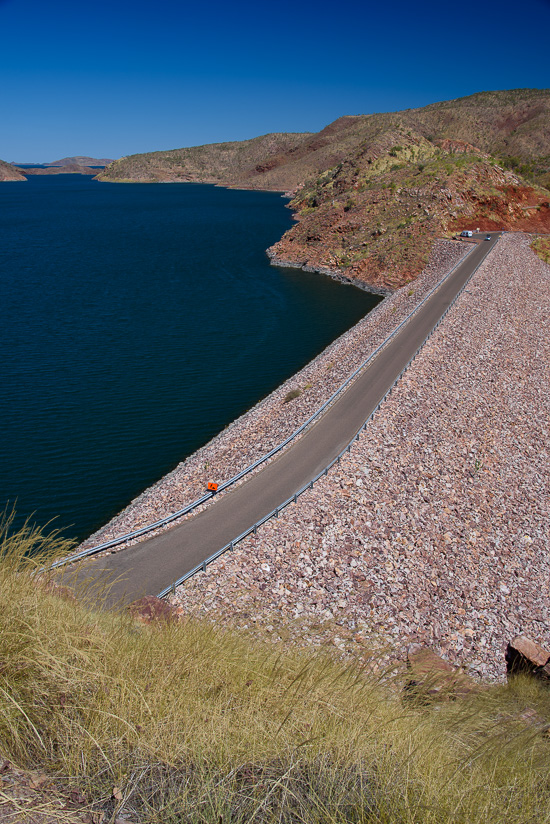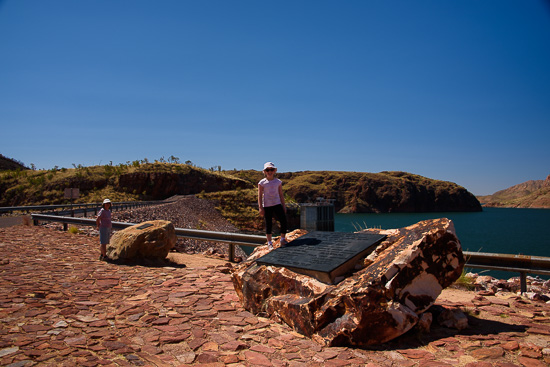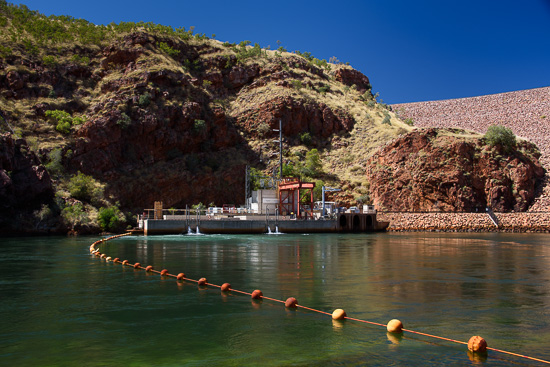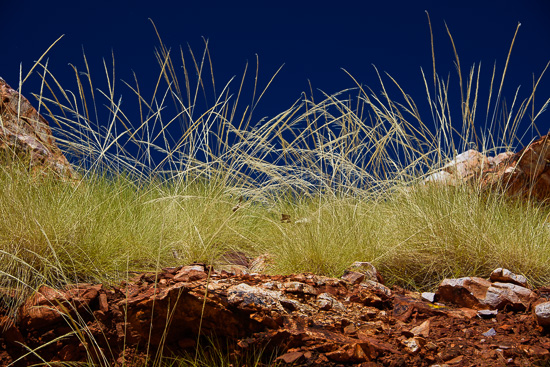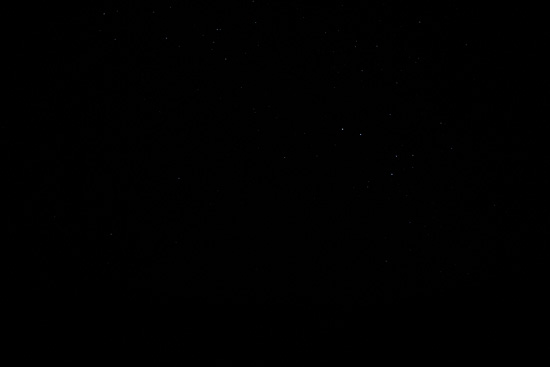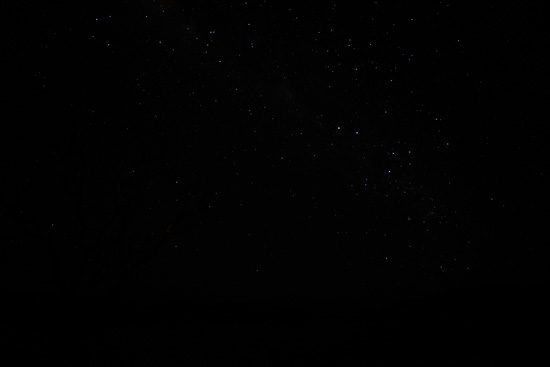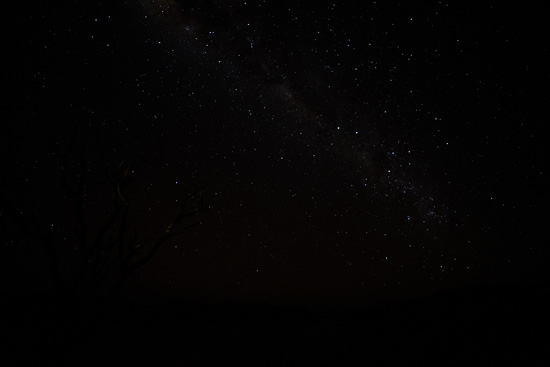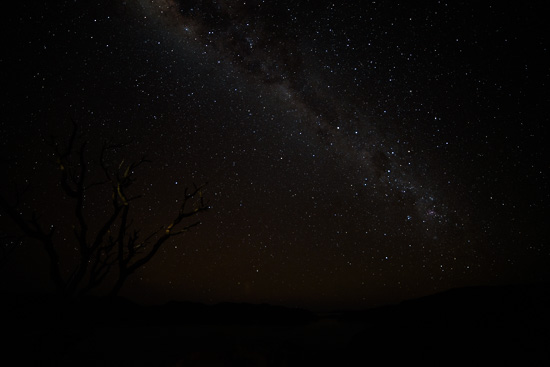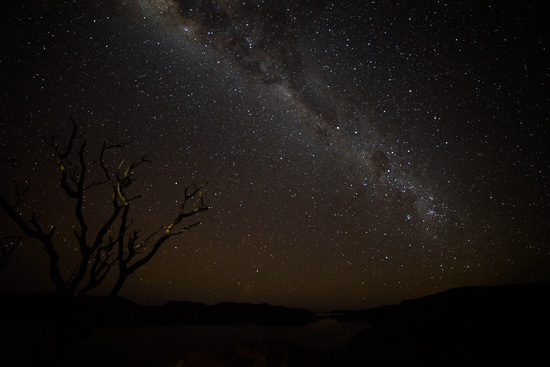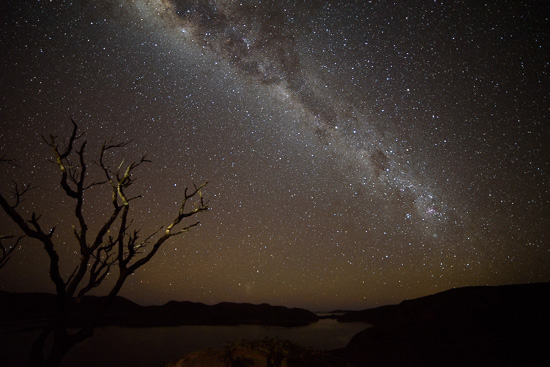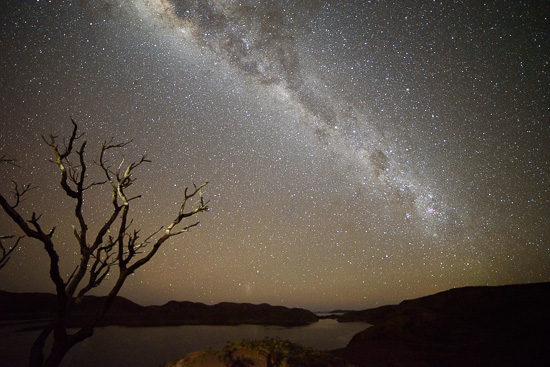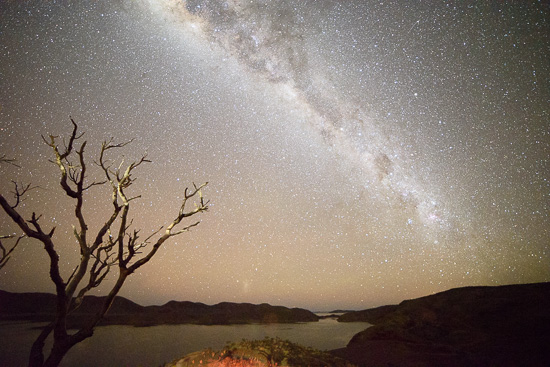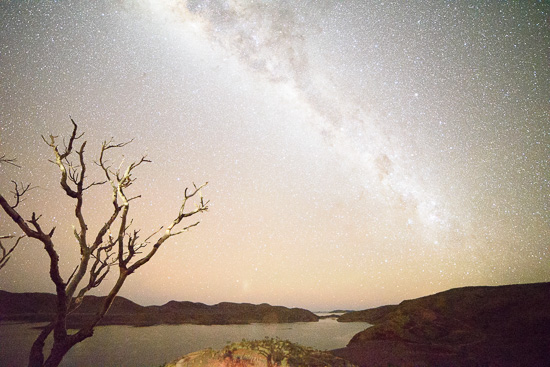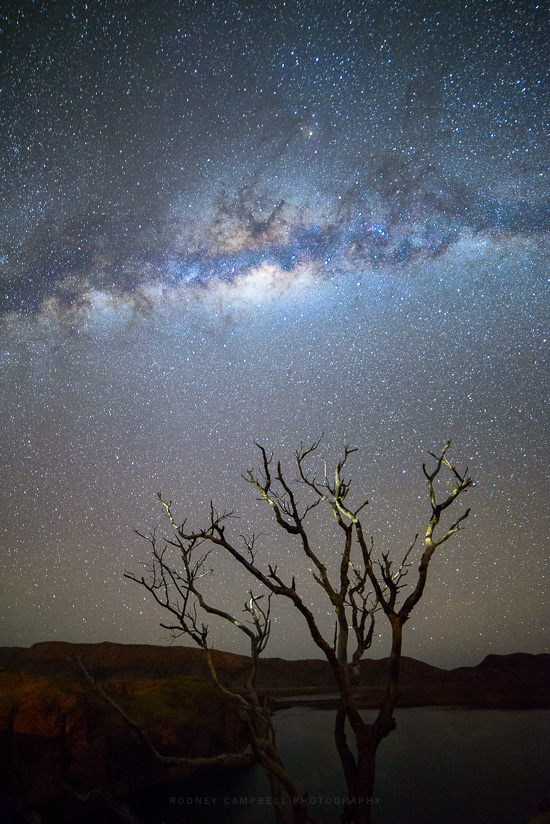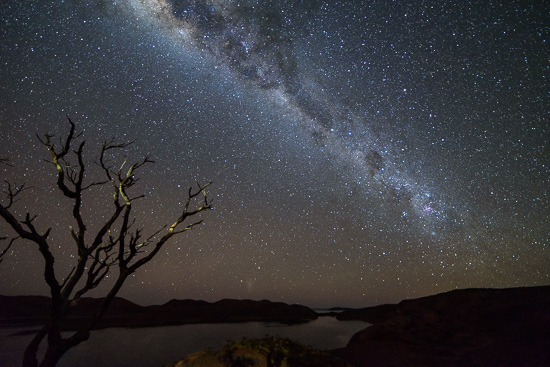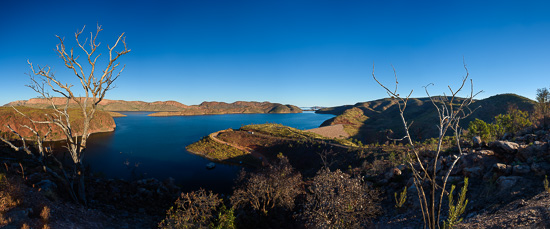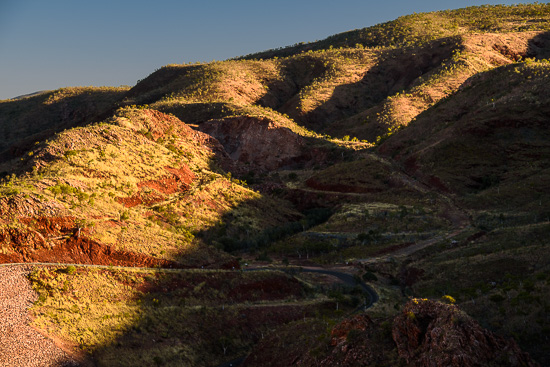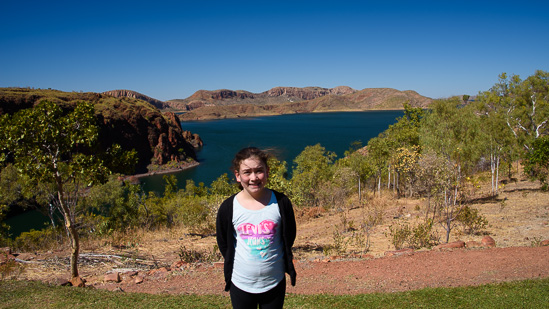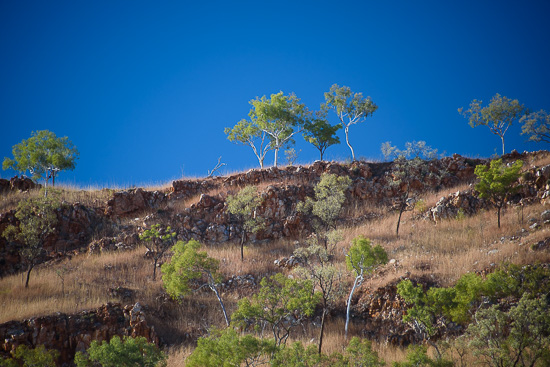Archive for September, 2015
Ord River Dam…
by Rodney Campbell on Sep.08, 2015, under Life, Photography
This morning we went down to take a look at the ord river dam, the dam lookout and the hydro station at the bottom.
The Ord River Dam was completed in 1972 with the work carried out over three dry seasons. The Dam was designed to never overflow at the main embankment with a 2.2 kilometres overflow cut made thorough solid rock between two hills, 8 kilometres from the Dam wall.
Ord River Dam Wall
Note: These photographs (especially the wider shots) look much better when larger – so click any of the images below to see larger versions in an inline overlay slideshow gallery viewer.
When the Ord River Dam was completed it became the largest capacity Dam in Australia with a volume of 5641 gigilitres (equivalent to 11.2 Sydney Harbours) The flow from both Dams was regulated to maintain a stable level in Lake Kununurra, which enabled the water to be diverted by gravity to the Ivanhoe Plain. The permanent water supply to Lake Kununurra also enabled the development for irrigated land on the adjacent Packsaddle Plain.
In the early 1990’s, it was decided that a hydroelectric power station would be built at the base of the Main Ord Dam. In order to be able to guarantee a reliable supply of energy a higher water level was needed to be maintained in the lake. Engineers determined that by building a weir across the spillway they could safely raise the storage by six metres. This almost doubled the volume to 10,763 gigalitres (increasing the capacity to 21 Sydney Harbours).
Ord River Hydro
Feathers
High ISO Testing – Take One…
by Rodney Campbell on Sep.07, 2015, under Life, Photography
Whilst I was up on the bluff overlooking lake argyle taking shots of the Milky Way I figured I’d take some high ISO test shots for instructive purposes both for my Arcanum cohort and the general photography community.
Some folks must wonder why they can’t take decent shots of the Milky Way with their point and shoot or phone cameras.
Besides requiring the appropriate natural conditions – dark skies (no or little moon (less than a quarter), away from light polluting cities and towns), clear skies (no clouds).
For really good static starry skies images you need to be using fast wide aperture lenses which allow lots of light in (e.g. f/2.8 or faster) and also the ability to shoot longer exposures (either by using a very wide angle of view to cut down on he effects of the movement of the stars or a motion tracking unit).
Lastly it is the high ISO performance of your sensor which completes the exposure puzzle in allowing enough sensitivity to the very faint light of the faintest stars which allows you to capture more star filled scenes of the night sky.
For the shots below I’ve taken these shots with the same camera, lens and framing. I have also used the same aperture (f/2.8) and shutter speed (30 seconds) and have just varied the ISO setting to give you a feel for what the resultant shot of the Milky Way will look like at various ISO settings.
These images are straight out of camera with just the white balance set so they are all the same.
Note: These photographs (especially the wider shots) look much better when larger – so click any of the images below to see larger versions in an inline overlay slideshow gallery viewer.
ISO 100 – just to give you a base reference – as you can see only the very brightest few stars are visible.
ISO 400 – this is probably the peak usable ISO available on most point and shoot cameras.
ISO 800
ISO 1600
ISO 3200 – this is probably the starting point for a good spread of stars shot under good conditions (using 30 seconds @ f/2.8).
ISO 6400 – this is likely around my ideal target under good conditions (using 30 seconds @ f/2.8).
ISO 12800 – this is surprisingly good under good conditions (using 30 seconds @ f/2.8) and seeing this shot out in the field made me rethink my use of ISO’s above 6400 for Milky Way shots. Following this I started experimenting with ISO’s in the 5000 to 10000 range for night shoots.
ISO 25600 – using the first of the extended ISO ranges on the D750 (Hi1) has definitely brightened the sky but has also increased the background ambient and the background noise and the stars have lost their contrast against the sky.
ISO 51200 – the second extended (Hi2) and maximum ISO capability of the D750. Way too bright overall and quite noisy but remarkable none the less.
Diamonds in the Sky…
by Rodney Campbell on Sep.05, 2015, under Life, Photography
Lake Argyle also hosts the Argyle Diamond mine.
Rio Tinto owns and operates the Argyle diamond mine in the remote East Kimberley region of Western Australia. The mine has been operating since 1983 and has produced more than 800 million carats of rough diamonds. It is one of the world’s largest supplier of diamonds and the world’s largest supplier of natural coloured diamonds. The most famous being their very rare and very beautiful Pink Diamonds.
How appropriate I’d come up here to photograph these gems in the sky over the lake. The conditions were still very good for photographing the stars. Absolutely no clouds (of course) and it was only a few days after the new moon. The moon was also very low in the sky to my far right and moving towards setting.
Clutching Diamonds
The above frame was actually taken at a staggering ISO 12,800 for 37 seconds at f/2.8. On my old D600 I would never have thought of shooting at above ISO 6400 but the new D750 appears to have at least one more stop of usable ISO range. It’s crazy how technology is advancing.
Note: These photographs (especially the wider shots) look much better when larger – so click any of the images below to see larger versions in an inline overlay slideshow gallery viewer.
I setup for the arch of stars over this dead tree right up close in my foreground for my panorama composition.
My final panorama is the result of stitching seven (7) frames taken with the 14mm – 33 seconds @ f/2.8 and ISO 6400.
I’m saving this image for an exhibition I’ll be doing with the Parallaxis group next year so these teasers will have to do till then sorry :)…
Argyle Lights
Lake Argyle…
by Rodney Campbell on Sep.03, 2015, under Life, Photography
Lake Argyle is Western Australia’s largest and Australia’s second largest artificial lake by volume. It is part of the Ord River Irrigation Scheme and is located near the East Kimberley town of Kununurra.
The construction of the Ord River Dam was completed in 1971. The dam was officially opened the following year. The dam is 335 metres long, and 98 metres high. The earth-fill only dam wall at Lake Argyle is the most efficient dam in Australia in terms of the ratio of the size of the dam wall to the amount of water stored. The lake was named after the property it partly submerged, Argyle Downs.
There is a nice little lookout right next to the caravan park which looks over the Ord River Dam and this end of Lake Argyle.
Lake Argyle
This is a seven (7) shot handheld pano looking from the lookout.
Note: These photographs (especially the wider shots) look much better when larger – so click any of the images below to see larger versions in an inline overlay slideshow gallery viewer.
It’s amazing to think that what you see from here is just a vey tiny fraction of the lake and you don’t realise this till you go out on the lake cruise and see how far you go only to look on the map and see again what a tiny part of the overall lake that you’ve covered :)…
I did however spy this nice dead tree right on the cliff edge of the lookout which looked like it might make for some decent foreground interest for some Milky Way action. A little more research with Photo Pills showed we’d face South and get the arch overhead… nice!… I love it when a plan comes together :)…
Light and Shadow
At normal full supply level the area of the lake formed by the Ord Dam is 980 square kilometres and impounds 10.7 million mega litres (8.6 million acre feet) of water, over 18 times the volume of water contained in Sydney Harbour! If the lake ever does flood to its maximum capacity then the volume will more than triple – Sydney Harbour could be filled more than 70 times!.
Down at the Lake…
by Rodney Campbell on Sep.02, 2015, under Life, Photography
Leaving the Keep River it was a relatively short trip to Lake Argyle.
On the way we crossed the border between the Northern Territory and Western Australia. It also meant a 90 minute time change as we switched to Perth time.
We ended up staying at the Lake Argyle Caravan Park…
It is a very nice park and to make things interesting – it has both a helipad, but also this amazing infinity edge pool overlooking the lake from up on this bluff.
View from the Edge
Note: These photographs (especially the wider shots) look much better when larger – so click any of the images below to see larger versions in an inline overlay slideshow gallery viewer.
We were only planning to stay here for the one night. However we wanted to do the sunset cruise on the lake but it was already booked out for this night so we stayed here an extra night so we could do the cruise the next evening.
Staying in a caravan park means a few things…
It means we get power…
It means we get water…
And it means we can finally have a decent shower and wash your hair :).
More of those amazing trees set on top of rolling hills of stone and grasses…
Walls
